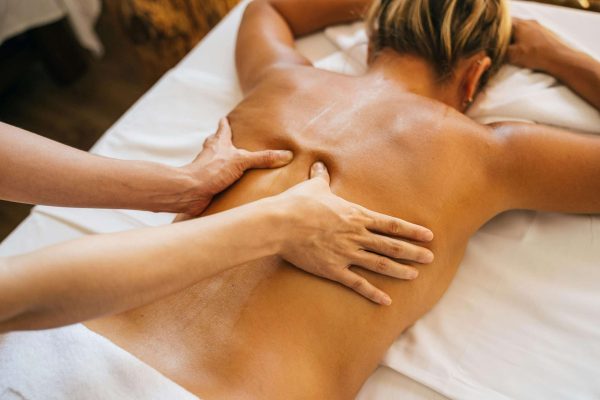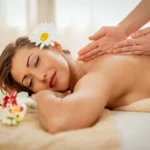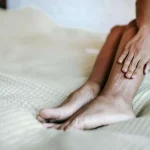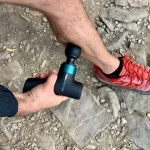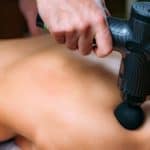Dealing with sore, tight, or overworked thigh muscles? A proper thigh massage can help you relax, release tension, and ease muscle pain—whether you’re recovering from a workout or sitting too long at your desk. In this guide, you’ll learn step-by-step thigh massage techniques that promote better circulation, improve flexibility, and support faster recovery. Ready to give your legs the relief they deserve? Let’s get started.
Table of Contents
Benefits of A Thigh Massage
Massaging the thigh muscles offers a wide range of benefits—from easing pain and tightness to boosting overall well-being. A targeted thigh massage can help release muscle tension, reduce soreness, and improve circulation, which may decrease swelling and speed up recovery. Regular massage also enhances flexibility and range of motion, making workouts more comfortable and effective. Beyond the physical benefits, studies show that massage can lower stress and anxiety levels, promoting a sense of calm and relaxation throughout the body.
The most effective way to perform a thigh massage is by using slow, circular motions with firm but gentle pressure. You can use your hands or a massage tool like a foam roller or massage gun. Begin at the top of your thigh and gradually work your way down toward the knee, making sure to cover the entire muscle area. Apply enough pressure to feel a slight discomfort—but not pain. If it hurts, ease up on the pressure. Aim to spend around 10–15 minutes on each thigh for the best results. For extra relaxation and relief, consider applying heat beforehand or using essential oils like lavender or peppermint during the massage.
Thigh Massage Preparation
Before you start massaging your thigh muscles, it is important to prepare your body for the massage. Warm up your muscles by doing some light exercises like walking or stretching. This will help you to relax and reduce the risk of injury. Make sure you are in a comfortable position and use a massage oil or lotion to help your hands glide smoothly over your skin. You should also take deep breaths to help relax your muscles and reduce tension.
When massaging your thigh muscles, start by using a gentle circular motion, gradually increasing pressure as you go. Move your hands in a slow, steady motion up and down your legs. You can also use kneading and tapping techniques to help relieve tightness in the muscles. For an even deeper massage, focus on the back of your legs, using long strokes to reach deeper layers of muscle. This will help to reduce pain and improve circulation.
Front of Thigh Massage

Long Strokes
Begin your massage by using long, gentle strokes with your fingertips or palm. Start at the top of the thigh and work your way down, using slow, even movements. As you massage, pay attention to areas that feel particularly tight or painful.
Kneading
Once you have completed a few long strokes, use your fingers to knead the muscle. Kneading is a circular, squeezing motion. Use your thumbs to press firmly into the muscle, then move your fingers in small circles.
Pincer Grasp
The pincer grasp is a useful technique you can use to target specific areas of tension. To do this, place your thumb and index finger on either side of the muscle. Gently squeeze and pull the muscle as you move your fingers in small circles.
These are some simple massage techniques you can use to give your thigh muscles a good massage for maximum relaxation and pain relief. Remember, the key is to be patient and use slow, gentle movements.
Back Of Thigh Massage
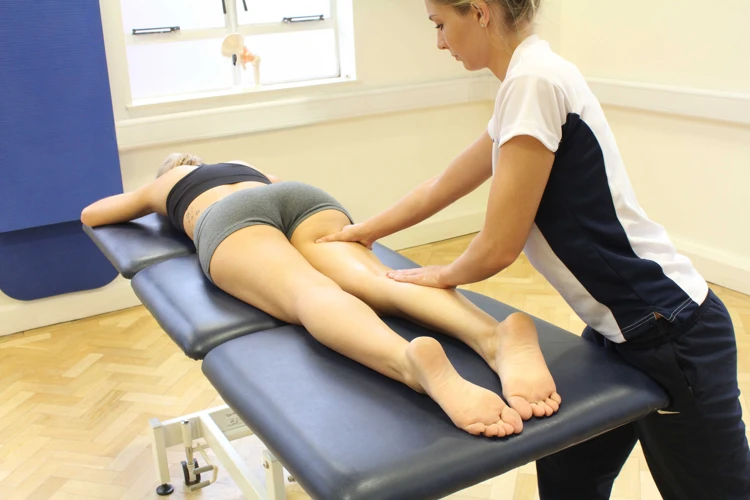
Long Strokes
Start your massage with long strokes along the back of the thigh. Use your fingertips to gently massage the muscle from the bottom of the buttocks to the back of the knee. Use gentle pressure and increase the pressure as your body begins to relax.
Kneading
Use your fingertips to knead the muscles of the back of the thigh. Gently apply pressure in a circular motion, using your thumb and forefinger. Massage for a few minutes, using a moderate amount of pressure.
Pincer Grasp
Using your thumb and forefinger, grasp the muscle of the back of the thigh and gently squeeze. This will help to relax the muscle and reduce tension. Repeat this technique several times.
By massaging your thigh muscles, you can gain maximum relaxation and pain relief. If you are suffering from muscle soreness or injury, be sure to seek medical advice.
Inner Thigh Massage
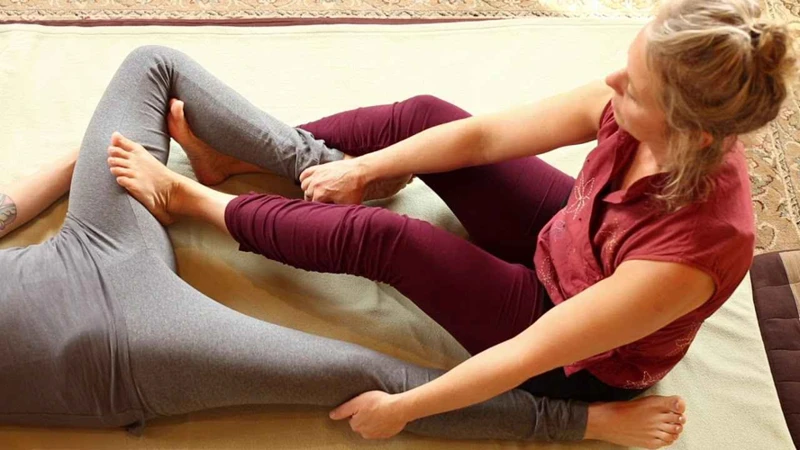
Long Strokes
Start by lightly running your hands over the inner thigh area, from the hip to the knee. Use long, slow strokes. This will stimulate the circulation of blood and relax the muscles.
Kneading
Use your thumbs to massage the muscles in a circular motion. Use pressure to knead the muscles and to help release the tension. This motion should bring relief to the soreness of the muscles.
Pincer Grasp
Use your thumb and index finger to grasp the skin and massage in small circles. This will help to relax the muscles and provide relief.
Outer Thigh Massage
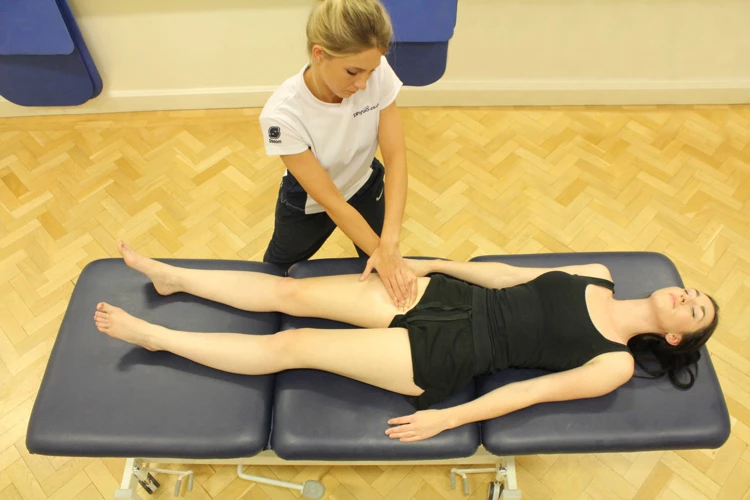
Long Strokes
Apply lotion to your outer thigh, and start by making long strokes with your fingertips, moving up and down the length of your thigh. Repeat this for 2 to 3 minutes.
Kneading
Knead your outer thigh with your fingertips. Move your hands up and down the length of your thigh, using your knuckles and fingernails to dig into the muscle. Pause in areas of tightness, and apply extra pressure. Repeat this for 2 to 3 minutes.
Pincer Grasp
Using your thumb and index finger, grab small sections of the muscle and pinch it gently. Move up and down the length of your thigh, pausing in areas of tightness. Repeat this for 2 to 3 minutes.
Finishing Your Thigh Massage

Once you have finished your thigh massage, it is important to finish it correctly. Close the massage session with some light, gentle strokes that will help to relax the muscle fibers. Start from the feet and slowly move up the body, using long, smooth strokes. You can also use a circular motion and some light tapping to help release any remaining tension. Finally, end with a few minutes of relaxation and calm breathing.
| Steps | Description |
|---|---|
| 1 | Lightly stroke the feet |
| 2 | Work your way up the body |
| 3 | Use long, smooth strokes |
| 4 | Circular motion and light tapping |
| 5 | Relaxation and calm breathing |
Safety Tips for Thigh Massage
- Always use adequate lubrication. Massaging your thigh muscles without proper lubrication can cause friction, bruising, and soreness. Use a light oil or lotion for lubrication, and ensure that you use enough to cover the entire area.
- Avoid direct pressure. When massaging your thigh muscles, use long, gentle strokes rather than direct pressure. This will help to avoid any discomfort or bruising.
- Go slow and be gentle. When massaging, it is important to go slow and be gentle. Start with light pressure and gradually increase the pressure as your muscles become more relaxed.
- Be aware of any signs of discomfort. If you experience any pain or discomfort while massaging your thigh muscles, stop immediately and take a break. This could be a sign that you are using too much pressure or that your muscles are not relaxed.
- Do not massage the back of your legs. The back of your legs contain sensitive nerve endings and should not be massaged. Massaging the back of your legs can cause pain and discomfort.
Frequently Asked Questions
What Techniques Should I Use to Perform A Thigh Massage?
Effleurage: This is a gentle stroking technique used to relax the muscles and increase circulation. Place your hands on the thigh and use gentle, sweeping strokes to massage the area.
Petrissage: This technique is used to massage deeper into the muscles. Using your fingers and palm, knead the muscle in a circular motion.
Friction: This is used to break down any adhesions or knots in the muscle. Using your thumb, apply pressure to the area and move in a circular motion.
Tapotement: This is a tapping technique used to stimulate circulation. Using your fingers or palms, tap the area in a rapid and consistent motion.
Compression: This technique is used to provide pressure to the area. Place your hands on the muscle and use a firm pressure to compress the area.
Vibration: Vibrations can help to relax the muscle and reduce tension. Using your palm, press down on the area and move your hand in a vibrating motion.
How long should a thigh massage last?
On average, a thigh massage should last between 10 and 15 minutes. This is enough time to effectively massage the muscles and provide relief from pain and tension. Here are some tips to keep in mind when giving a thigh massage:
- Ensure that the massage is not too long, as it can lead to too much stimulation
- Apply medium to firm pressure when massaging the thigh muscles
- Focus on areas that feel particularly tight or sore
- Use a circular massage motion, starting at the top of the thigh and moving down
- Allow time for the muscles to relax and release tension
- Finish the massage with a light stroke on the thigh
If the massage is too short, it will not be as effective in providing pain relief. If the massage is too long, it can cause muscle fatigue and discomfort. Therefore, it is important to find the right balance between the length of the massage and the intensity of the pressure used.
How Often Should I Perform A Thigh Massage?
The frequency with which you should massage your thigh muscles depends on your individual needs. If you’re looking to reduce pain from a specific injury, it’s best to massage the area two or three times daily. If you’re using massage as a way to relax and reduce stress, you can massage your thigh muscles once or twice a week. For best results, use massage oils or creams and light to medium pressure, focusing on the areas that are tight or sore.
Are there any health risks associated with thigh massage?
Thigh massage is generally considered safe, however, it can cause some minor side effects such as bruising, soreness and pain. People with pre-existing medical conditions, such as diabetes or circulation problems, should consult their healthcare provider before engaging in any type of massage therapy. Additionally, people with sensitive skin, varicose veins, or other skin conditions should limit the pressure used during thigh massage to reduce the risk of irritation.
Will Thigh Massage Improve My Flexibility and Mobility?
- Massage helps increase flexibility and mobility by loosening tight muscles and joints, improving circulation, and relieving muscle tension.
- Stretching after a massage can help maintain the effects of the massage and further improve mobility and flexibility.
- Regular massage can help reduce muscle tightness, improve range of motion, and relieve tension in the body, leading to better overall flexibility and mobility.
- Massage can also help reduce stress and anxiety, which can lead to improved flexibility and mobility.
In conclusion, massage can improve flexibility and mobility by increasing circulation and relieving tension. Regular massage can help maintain the effects and further improve mobility and flexibility. Stretching post-massage can also help maintain the effects of the massage. Massage can also help reduce stress and anxiety, which can lead to improved flexibility and mobility.
Conclusion
Thigh massage is a powerful way to ease muscle tension, boost circulation, and relieve pain. Whether you’re recovering from a workout or managing everyday stress, massaging your thigh muscles can help you relax and feel better. Start with light, circular motions and gradually increase the pressure as your muscles warm up. For an enhanced experience, consider adding essential oils, muscle rubs, or applying a warm or cold compress before or after the massage. With regular practice, thigh massage can improve mobility, reduce discomfort, and promote a deeper sense of relaxation.
References
⚠️ Disclaimer:
This article is for informational purposes only and does not constitute medical advice. Always consult with a licensed healthcare provider or certified massage therapist before beginning any new treatment, especially if you have pre-existing health conditions or concerns.



